- Home
- Report of Delicious Sake Serving Restaurants, My Three Meals, tokyo, minato
- Yamaguchi’s foods and sake at “Fuku no Tori”, Tameike-Sanno
Yamaguchi’s foods and sake at “Fuku no Tori”, Tameike-Sanno
- 2019/7/17
- 1 comment
Good day!
Thank you very much for visiting this blog.
Today’s report is about a restaurant in Tameike-Sanno, “Fuku no Tori”.
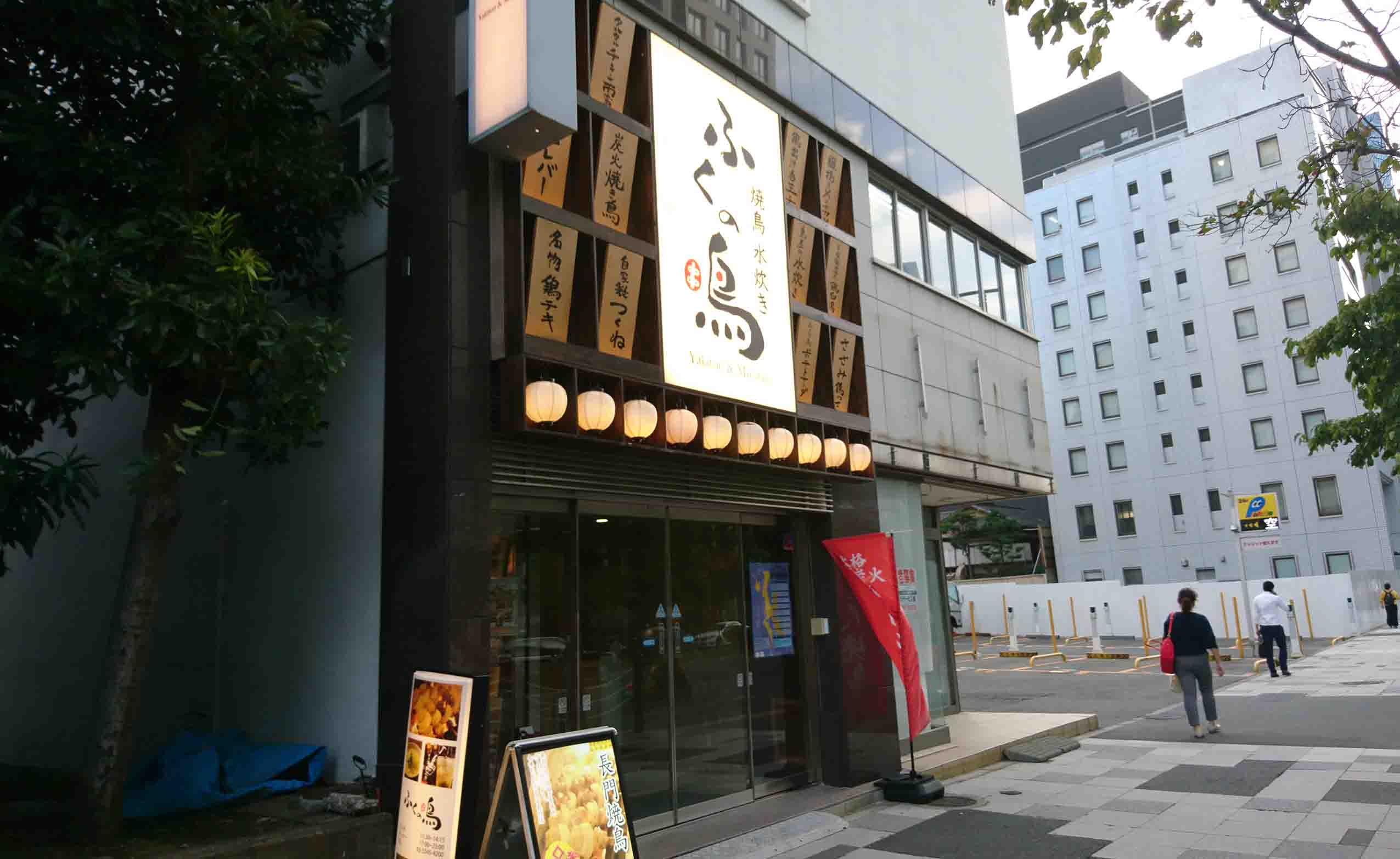
Contents
Loitering in Tameike-Sanno
The day was a Friday in early August.
I was waiting for my ex-colleague at Sanno Park Tower near Tameike-Sanno Station (it’s almost the same building as the station).
Both of us want to start our own businesses, and we meet once in a year or a half year even after I left the previous company to know each other’s situations and encourage each other.
We made an appointment at 18:30, but he gave me a call and said that he would be late because he got a phone from his customer just before the closing time.
As he would take more time and we hadn’t decided where to go, I started to walk around Sanno Park Tower to find a good restaurant for the night.
It’s been about 15 years since I moved to Tokyo, and more than 4 years since I started to use this station to commute.
However, I didn’t know about Tameike-Sanno much until about 2 years ago.
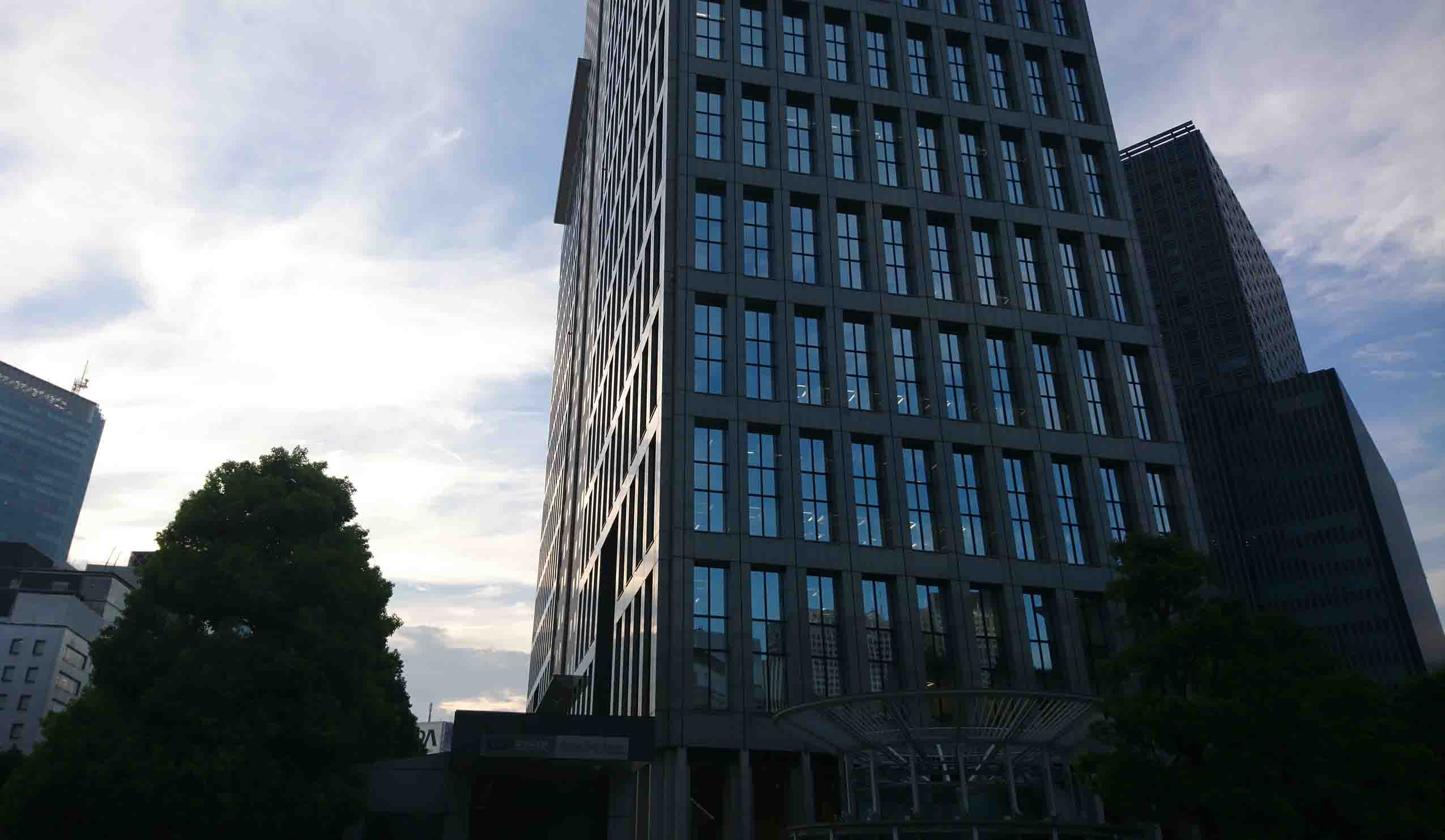
In this Sanno Park Tower, which is above Tameike-Sanno Station, there is the main office of NTT DOCOMO (Japanese cellphone carrier).
Talking about DOCOMO,

“DOCOMO Tower” in Shinjuku (to be exact, Yoyogi) which is the 4th highest building in Japan is famous.
According to Wikipedia, DOCOMO Tower has only the antenna, telecommunication equipment for cellphones, and their call center.
There is no main office function in the tower.
This tower is the height of 50 floors, and the office floors are from the first to the 14th.
On the 15th to 25th, there are telecommunication equipment, and above them are antennas.
There are walls like a normal building, but upper floors have nothing inside.
I thought that this tower was the main office of DOCOMO, but it wasn’t.
I was surprised to know it was just a communication facility.
Well, let’s get back to Sanno Park Tower.
At the next to Sanno Park Tower,
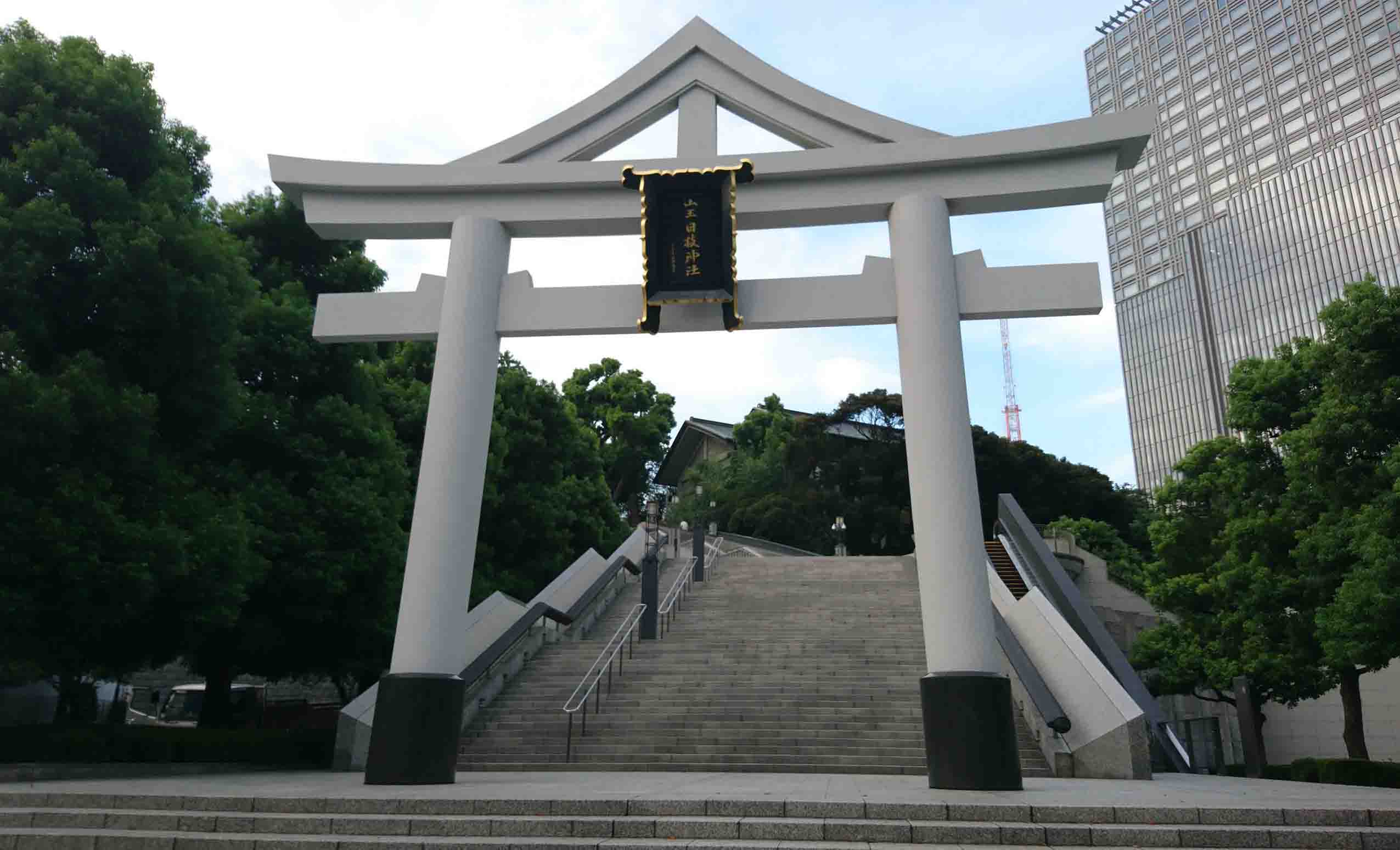
There are Sanno Hie Shrine,

And the prime minister’s official residence.
There are some spots to see around there.
Tameike-Sanno is known as a town of office buildings, but over the road in front of Sanno Park Tower, I found a shop which looked like an Izakaya restaurant.
I didn’t have enough power to walk more in a hot day, so I chose the restaurant for the dinner with my ex-colleague.
The restaurant’s name was “Fuku no Tori”.
Fuku no Tori
I met my ex-colleague 20 minutes later, and we entered “Fuku no Tori”.
The thin room on the underground floor was bright and there were already many customers. We could fortunately get seats.
It was a hot Friday evening, so we started with beer.
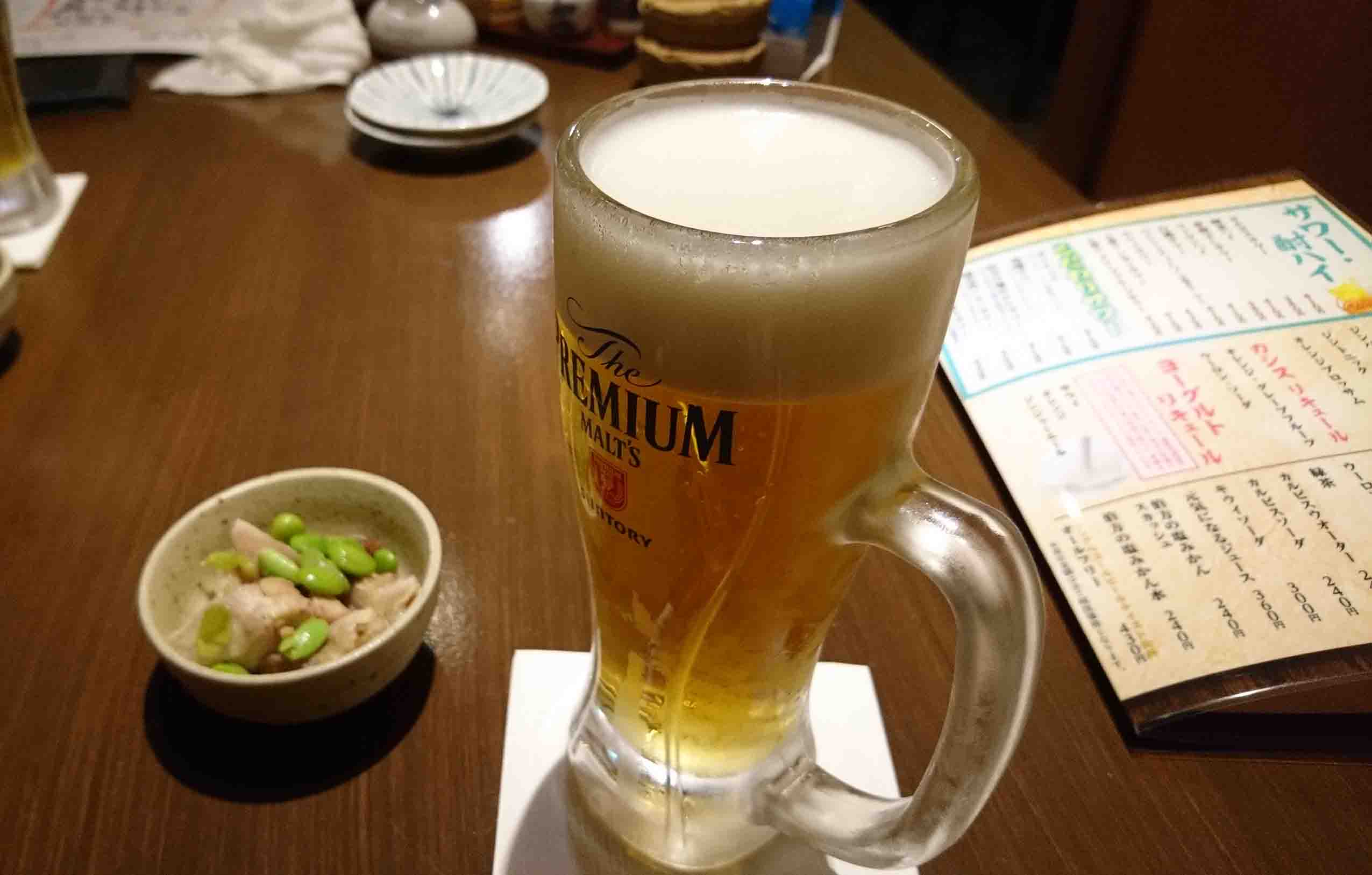
A beer on a hot day is soooo great.
We browsed the menu book drinking the beer.
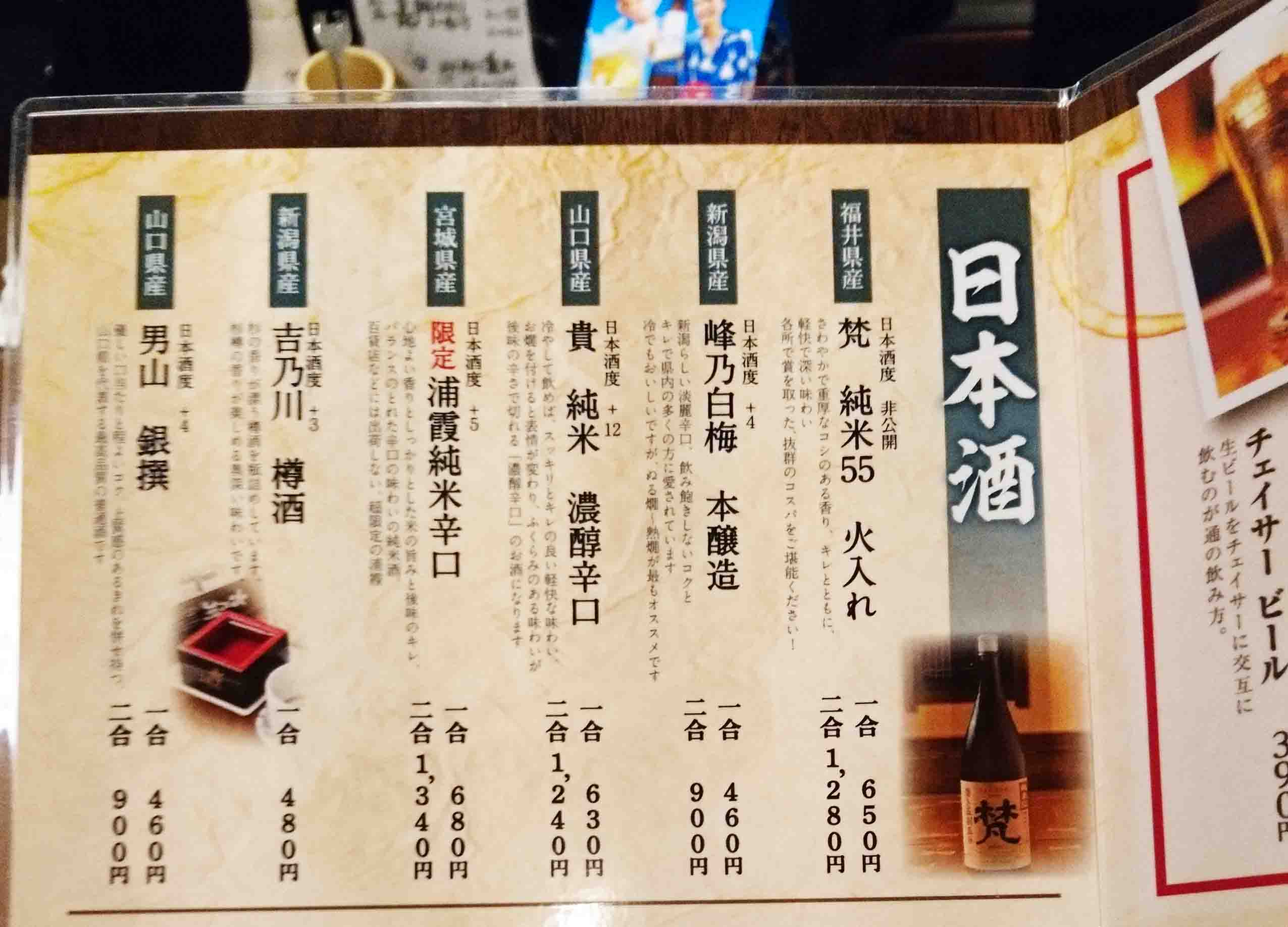
There were many reasonable Sake.
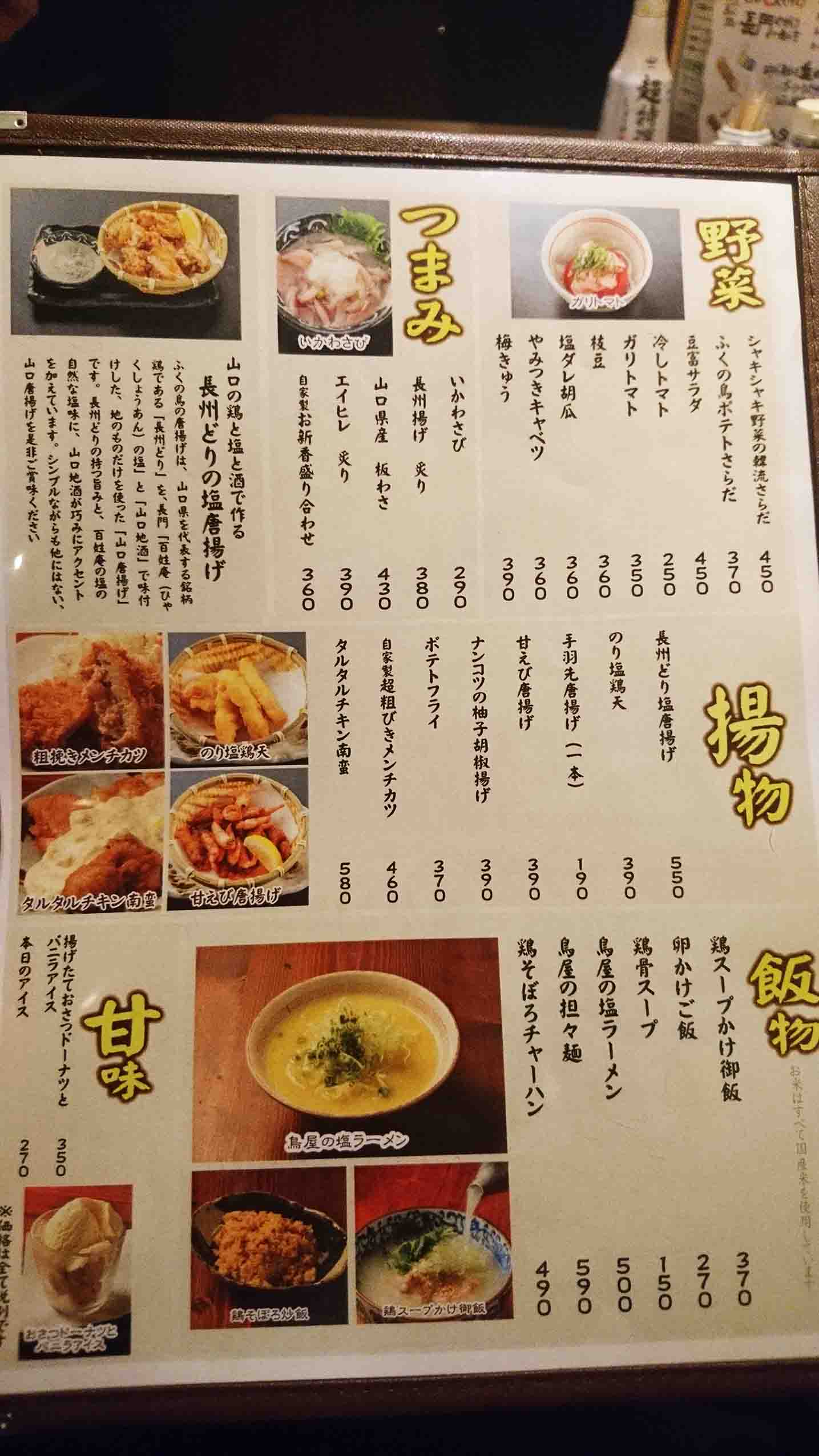
For the food menu, they had unique foods of Yamaguchi Prefecture such as chicken dishes using Choshu-dori (a brand of chicken grown in Yamaguchi Prefecture) and Choshu-age (Yamaguchi’s special deep fried fish paste).
I introduced a restaurant of Yamaguchi foods called “Fuku no Hana” in this blog before.
This “Fuku no Tori” is a sister shop of “Fuku no Hana”.
That should be why “Fuku no Tori” had many Yamaguchi foods.
We started to order what caught our eyes.
Chicken dishes and Minenohakubai
We ordered Sake, “Minenohakubai Honjozo“, for the second drink.
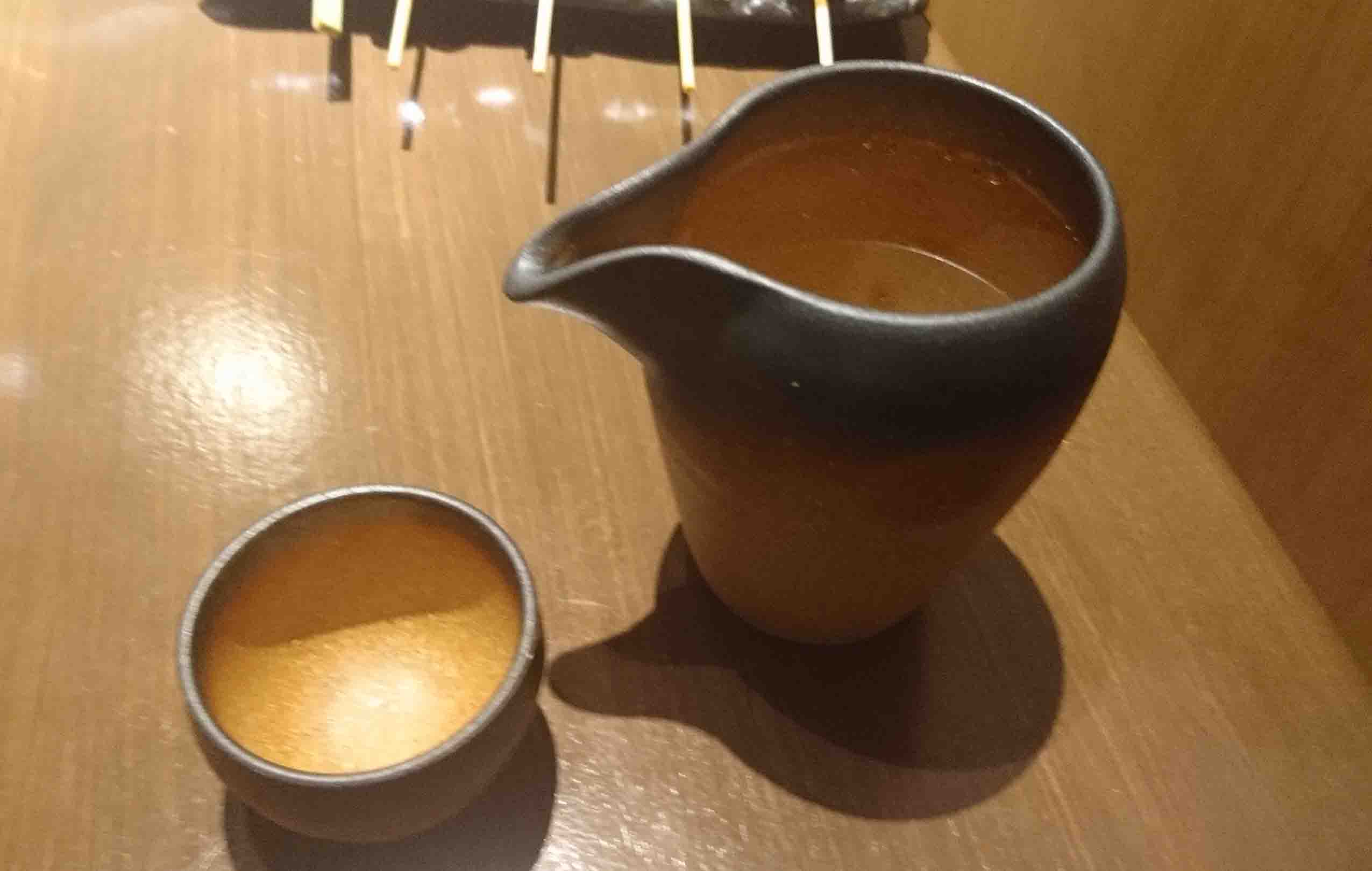
It was a dry sake, and the taste was light and clear like water.
The food we had with the sake was,
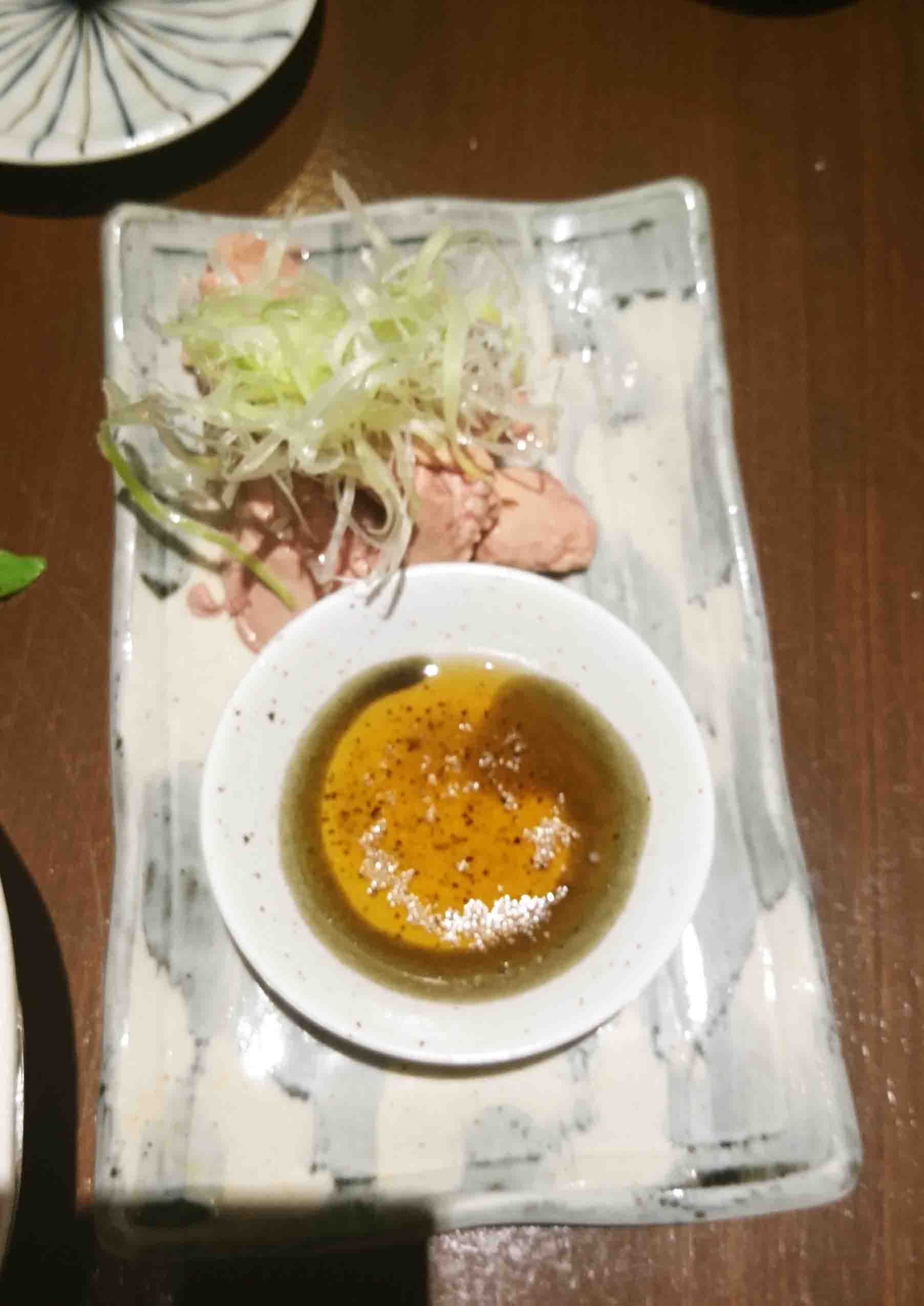
“Superb liver“.
This is a chicken liver dish.
It didn’t have unpleasant smell of liver.
The taste was light but good with creamy texture.
When I had Minenohakubai with the dish, the sake and the food didn’t disturb each other.
The sake washed my mouth leaving a slight flavor of the liver.
The next one we tried was “Yaki-tori” (grilled chicken skewers).
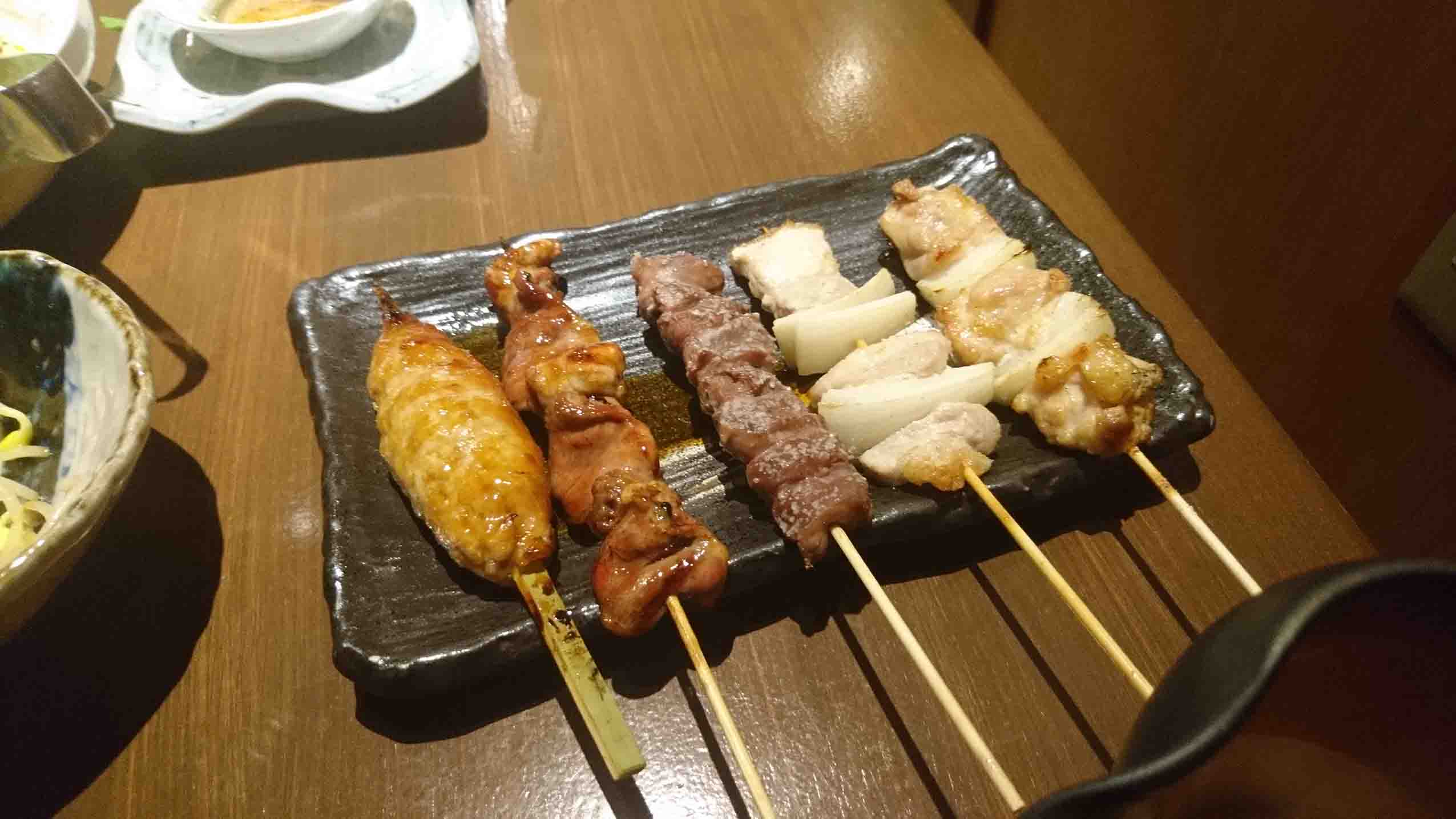
The texture was nicely chewy, and I could feel the good flavor of the meat.
It had fat of perfect amount.
The combination of the chicken and Minenohakubai was also good, not disturbing the tastes of the others, and refreshed my tongue.
I thought that “Minenohakubai Honjozo” was a perfect sake to enjoy with foods!
Yamaguchi foods and Yamaguchi’s local sake “Otokoyama Ginsen”
We chatted a lot over good sake and foods, and it came to a topic about our jobs.
The reason why I quitted the previous company was that the salary would never go up even though I worked hard.
According to the ex-colleague, the situation was not changed.
I changed the company for that reason.
Unfortunately, it was same in the present company.
I do so many complicated works about getting permissions for money lending and investment bank, making all the related documents, preparation for starting new financial business, making manuals, making contracts, constructing the operation system… and more, by myself.
Furthermore, I do the internal audit as the head auditor, but my salary and the position doesn’t go up, and the bonus is only 50 thousand yen (by the way, I didn’t get extra payment when I became the auditor, either).
I can’t do it like that( ´△`)
Well, the conversation became more and more lively in inverse proportion to the changeless low salary.
The foods and sake disappeared more quickly as the chatting went on.
We ordered the next sake.
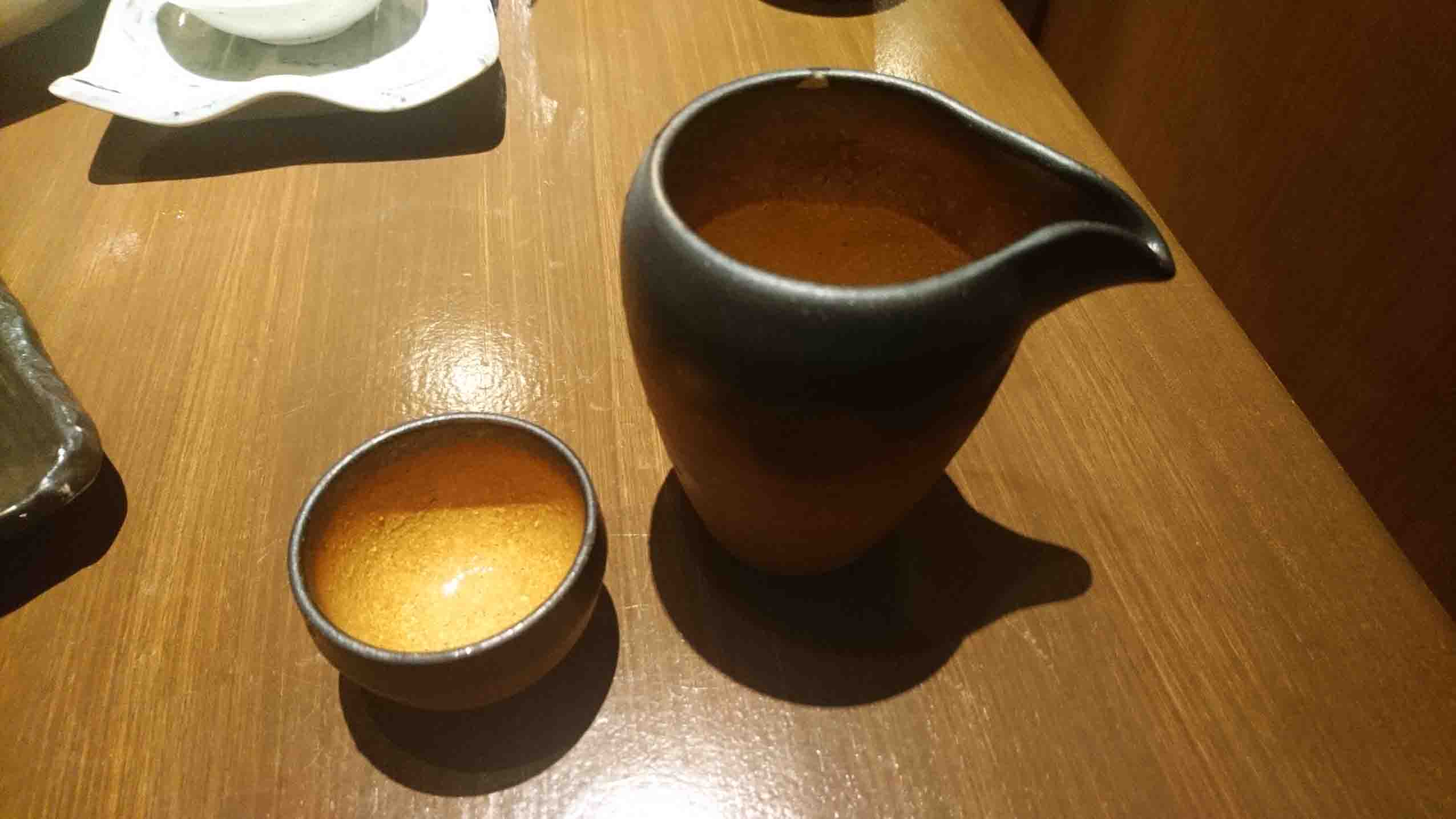
A Yamaguchi’s local sake, “Otokoyama Ginsen“.
Sake which has name of “Otokoyama” is made in Hokkaido, Niigata, and Hyogo as well, but this is the one from Yamaguchi.
The taste was powerful as the name (“Otoko” means “man” in Japanese).
I felt the alcohol strong, and it had a unique powerful flavor.
The food for this sake was,
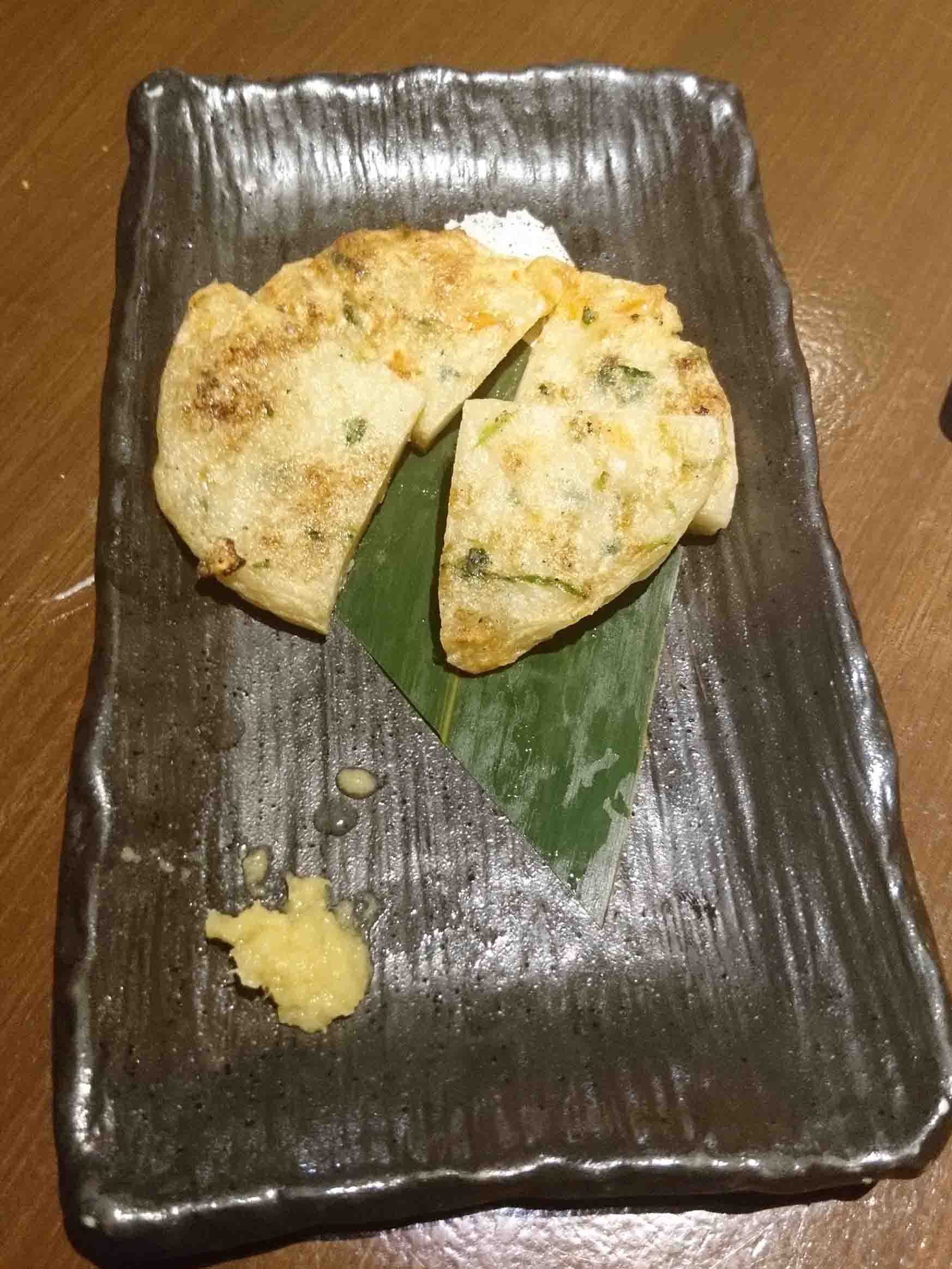
“Choshu-age“.
This is a round shaped deep fried fish paste.
It looked like “Satsuma-age”, but it’s a food of Kagoshima Prefecture (“Satsuma” is Kagoshima’s old name).
This one at “Fuku no Tori” is “Choshu-age” because it’s from Yamaguchi Prefecture (called “Choshu” until the Edo period).
This kind of deep fried foods which are made with fish paste and vegetable flakes, are made in all over Japan since long time ago.
It’s called “Tempura” in the western Japan, and “Satsuma-age” in the eastern Japan.
According to Wikipedia, the origin is China, and it spread in Japan later through Okinawa, and then Kagoshima.
In one theory, Kagoshima’s feudal lord, Nariakira Shimazu, invented “Satsuma-age” which suits Kagoshima’s climate of high temperature and humidity learning from Japanese traditional “Kamaboko” (boiled fish paste).
I personally guess that this dish was introduced in the eastern Japan including Edo from Satsuma Domain in the end of the Edo period.
That is why it’s called “Satsuma-age”.
It should have been said that it was invested by Nariakira Shimazu because Nariakira was popular as a good lord in the end of the Edo period, when Satsuma-age was introduced.
People said it even if it wasn’t true.
The Choshu-age we tried had sweetness of fish paste and vivid flavor of Yuzu citrus.
I liked it very much!
My image of Satsuma-age was a chunky piece with chewy texture, but Choshu-age was thin and light texture.
I personally liked Choshu-age more.
And the final dish was,
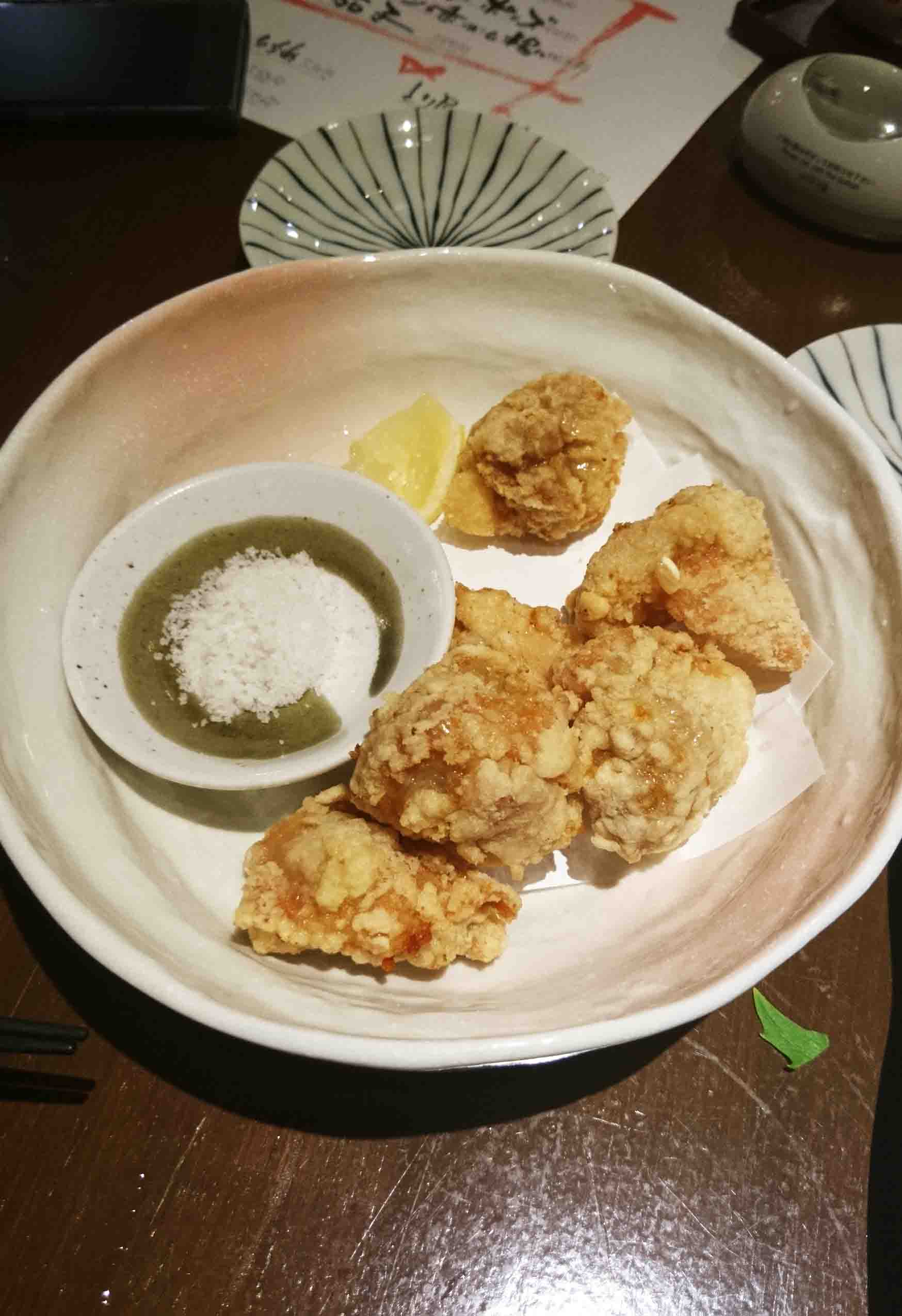
A standard menu, “Kara-age” (Japanese deep fried chicken).
This is what I always order if the restaurants have it.
To see the menu book, this Kara-age was made of “Choshu-Dori” which was seasoned with “Hyakushoan no Shio” and “Yamaguchi’s local sake”.
“Hyakushoan no Shio” is a brand of salt which is made by “Hyakushoan” in Yuyashima Island in Nagato City, Yamaguchi.
According to their website, they collect the sea water in spring, when seaweeds increase and the water contains the flavor of the seaweeds.
They boil the water in traditional iron pots and make the salt.
It was “pure Yamaguchi” Kara-age of Yamaguchi ingredients!
The chicken didn’t have much fat, but the taste was nice with mild salt and the flavor of the meat.
The combination with Otokoyama was very good as well!
We enjoyed foods and sake of Yamaguchi a lot.
Thanks to delicious foods and sake, we had a great time talking about not only the situations of each other, but also about exchange of useful information for starting new business.
I’m trying to lose 10 kg in a year, so I only had salad apart from the dishes I mentioned.
They had more attractive menus such as Mizutaki (a type of hot pot dish) and Japanese omelet seasoned with chicken stock.
We hope to visit the restaurant again to talk about positive and bright things.
I hope that I will succeed in my own business by the time.
Well, if I can’t make it, I won’t be able to go there^^;
It's our great pleasure if this article is helpful for you.
Comment (0)
No trackbacks yet.


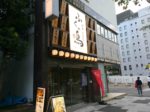
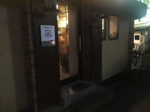
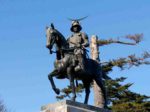
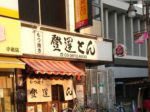
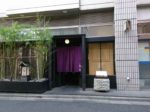
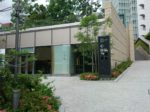
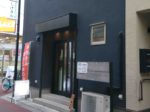
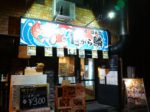
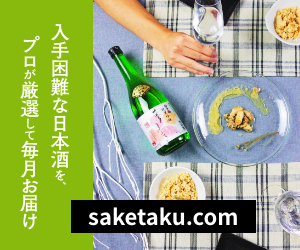
No comments yet.